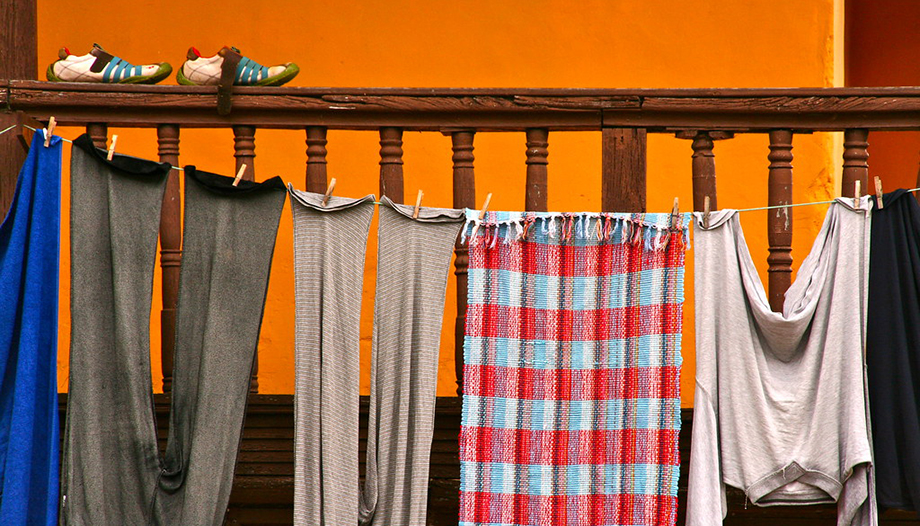A prudent measure is to read the labels of the garments, which indicate the treatment according to the fibers of each fabric. If we do not know the meaning of any symbol, we can easily find it on the Internet.
In any case, it is important to be able to identify natural and chemical textile fibers, to know their general properties and, consequently, to know how to treat them.
There are natural fiberswhich can be vegetables, such as cotton, flax, jute, hemp or sisal; animalssuch as wool, silk or hair; and minerals, such as asbestos. On the other hand, the chemical fibers can be of natural polymer, such as viscose, modal, cupro, acetate and triacetate, or from synthetic polymer: polyester, nylon, acrylic or elastane, among others.
Natural fibers vegetables have the following properties: they dye well; they have low acid resistance and high alkali resistance; they offer high moisture retention; they have low resilience, both dry and wet, so they wrinkle easily and do not recover on their own except by ironing. Consequently, these fibers generally require care when spotting, laundering or spinning.
Neutral or alkaline soaps should be used for washing. Full detergents or bleach should only be used on white garments. Fabric softener is not necessary. Although they are usually washed with water, dry cleaning is recommended for colored linen, and spin-drying should be avoided. As for ironing, its quality is linked to the degree of humidity.
Natural fibers of origin animal The most common are wool, silk and leather. Their composition is mainly protein.
Wool and silk have many properties in common: good resilience, which allows their recovery after having been deformed; little resistance to high temperatures; mechanical action with heat and humidity can produce shrinkage; good capacity for dyeing; they do not resist bleach; the use of bleaching agents is completely discouraged, and the only one they can withstand is hydrogen peroxide, with caution and rinsing immediately; they are very sensitive to mild alkalis, so we will take care of the color when stain removal, especially in silk. Softener can be used with caution for wool, and a few drops of vinegar for rinsing in silk. The quality of ironing is linked to the degree of humidity of the garment; it is better to treat them dry. Wool knitwear can be washed with water and neutral detergent. If it is done in the washing machine, use the wool program and without sudden changes in temperature (set the temperature selector to 0º).
Leather differs greatly from other natural fibers in terms of properties, treatment and care. If we are not sure of the proper treatment, the best thing to do is to take these garments to a specialized dry cleaner.
The chemical fibers of natural polymer imitate natural fibers. Among their most outstanding properties we find: they are easy to care for both in washing and ironing; they are moderately stiff and not very resilient, wrinkles are very marked; they generate little pillingThey are long lasting and resistant to external agents such as mold and mildew; oxidizing products should be used with caution.
The chemical fibers of synthetic polymer are entirely chemical, obtained from man-made products. They are classified according to the way they are obtained, e.g. polycondensation: polyamide such as nylon, perlon, enkalon; polyester, such as terylene, terylene, terleka, terylene, trevira, dacron; or polymerization: the fibers acrylic such as acrylan, orlon, leacril, crilenka; and polyurethane fibers such as elastane or lycra. Their properties are: they are usually low cost; high formation of pillingThey absorb grease well; low water absorption; can become charged with static electricity due to friction and heat; are quite abrasive or very elastic.
The weak point of the acrylic fiber is that it should not exceed 30º of temperature; they shrink and deform easily. In machine washing it is advisable to use the wool program, and dry it on a horizontal surface.








